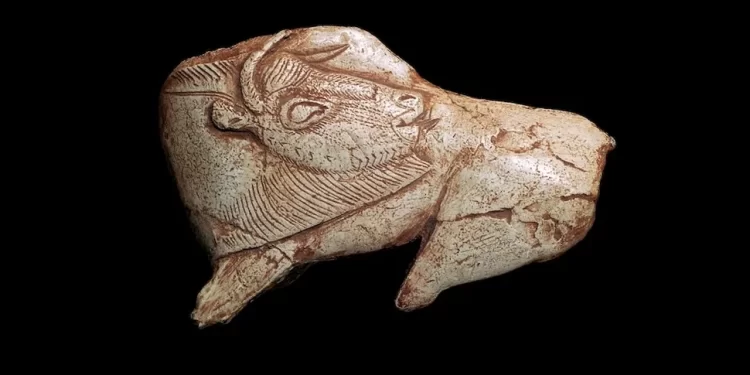A small yet extraordinary carving, created 14,000 years ago by a group of prehistoric hunters, represents a significant piece of ancient artistry. This ancient artifact, depicting a steppe wisent (Bison priscus), an extinct species of bison, was crafted from a reindeer antler that had previously served as a spear thrower for hunting, according to the Bradshaw Foundation. It was discovered within a cave in France. Despite its modest size—approximately 4 inches (10.5 centimeters) wide—the figurine is rich in detail, featuring meticulously carved individual hairs across the bison’s body and a pair of horns that lend the piece a strikingly lifelike appearance.
Archaeologists have attributed this artifact to the Magdalenian culture, a Paleolithic society that flourished in Europe between 23,000 and 14,000 years ago, during the last ice age. The Magdalenian people are celebrated for their sophisticated artworks, including charcoal cave paintings and engravings made with stone and bone tools, as noted by the Natural History Museum in London. In addition to their artistic achievements, the Magdalenian people were adept big-game hunters, primarily targeting horses and bison. Researchers believe that the abundance of food during this period allowed them the leisure time to focus on artistic pursuits. This remarkable artifact is currently preserved and displayed at the National Museum of Prehistory in Les Eyzies, France.











